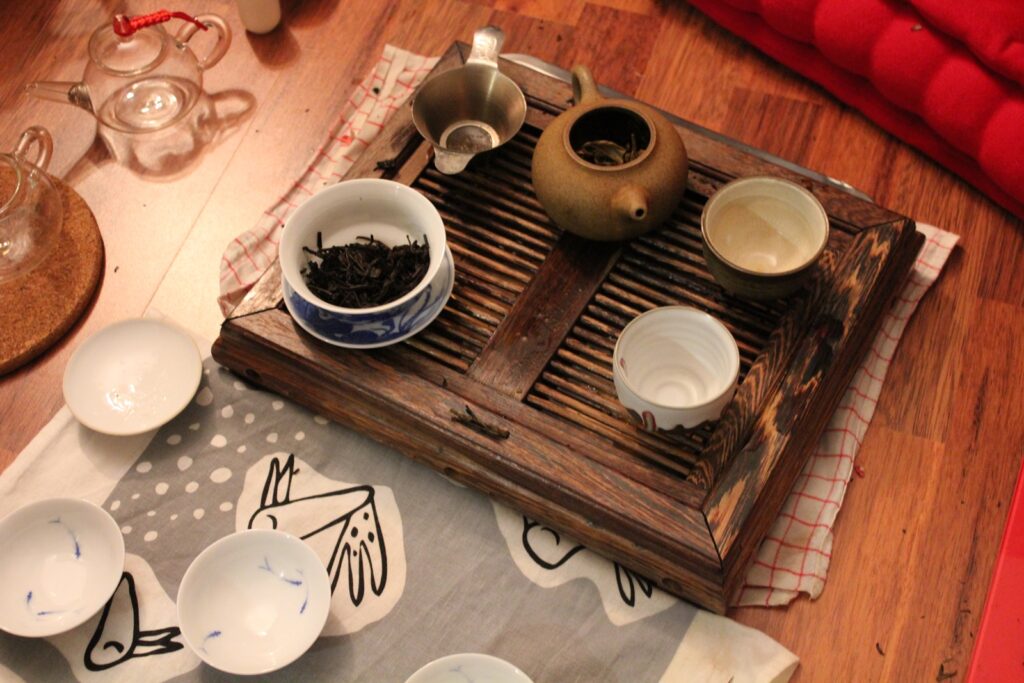Can you tell different green teas apart? How about different cultivars of the same tea? Last week, I went to a Longjing tea tasting by TeeMaa that really put my palate to the test – 5 cultivars of the same tea! We explored everything from different cultivars to the impact of terroir on this iconic Chinese green tea.
Longjing: China’s Most Famous Green Tea
Longjing, also known as Dragon Well tea, is arguably China’s most celebrated green tea. This flat-leaf beauty has been captivating tea drinkers for centuries with its delicate sweetness, subtle nuttiness, and that distinctive pan-fired character that sets it apart from other green teas.
Longjing Production Areas
I’ve always associated Longjing with West Lake in Hangzhou, so I was surprised to find out that West Lake Longjing (Xihu Longjing) makes up only about 10% of all Longjing tea production. The most prized Longjing comes from the West Lake core production area, divided into four famous growing regions known as Lion, Tiger, Dragon, and Plum. These areas produce what’s considered the heritage concept teas – the top tier representing just 3.3% of production that’s usually bought up before it’s even made!
The remaining 90% comes from other areas in Zhejiang Province. And as I found in the tasting, while still delicious, these teas lack the unique characteristics that make West Lake Longjing so special.
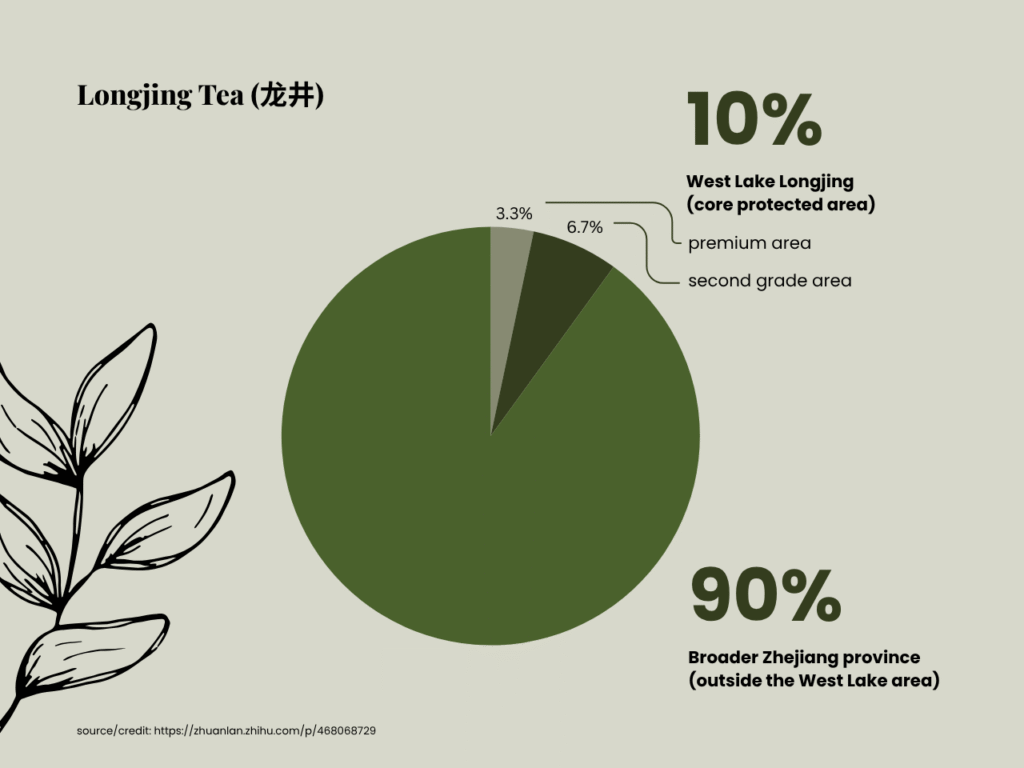
UNESCO Cultural Heritage and Processing Technique
In 2022, the traditional processing technique for Longjing tea was recognized as a UNESCO Intangible Cultural Heritage. This recognition celebrates the ancient hand-processing method that gives Longjing its characteristic flat, sword-like appearance. The leaves go through the following processing steps: picking, selecting leaves, withering, killing green, re-wetting, pan-frying, and ash-storing. Each step requires incredible skill and timing to achieve that perfect balance of shape, colour, aroma, and taste.
Longjing Grading and Anti-Counterfeiting
The grading system for West Lake Longjing is quite specific, ranging from Special Grade down to Grade 3, with an additional Below Standard category. Each grade has distinct characteristics in terms of leaf appearance, aroma, and taste profile. Special Grade features smooth, uniform, and pale jade-green leaves with a distinct chestnut-like fragrance and a rich umami taste. While lower grades show more leaf variation and lighter aromas.
Due to Longjing’s popularity and premium pricing, counterfeiting is unfortunately common. The West Lake Longjing Tea Industry Association has implemented anti-fake measures, including special packaging and authentication systems to help consumers identify genuine West Lake Longjing.
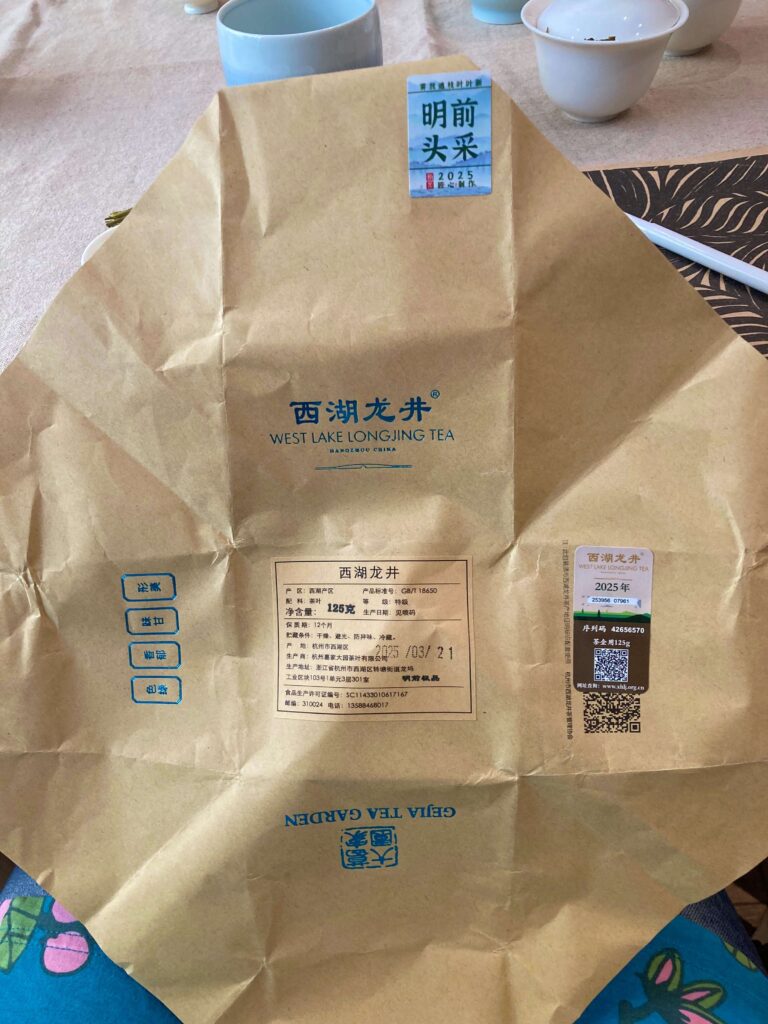
Longjing Tea Tasting Challenge
Armed with some background knowledge, it was time to put our taste buds to the test. The session was structured into two rounds, each designed to highlight different aspects of Longjing production and terroir.
Round 1: The Cultivar Comparison
Our first round featured three different Longjing cultivars, all from outside the core West Lake production area. This gave us a chance to focus purely on how different cultivars express themselves.
- Group Cultivar
- Longjing 43
- Longjing 108
The brewing method was consistent across all the teas: 1st infusion at 30 seconds, 2nd at 20 seconds, 3rd at 20 seconds, and 4th at 1 minute to really test the limits of each tea.
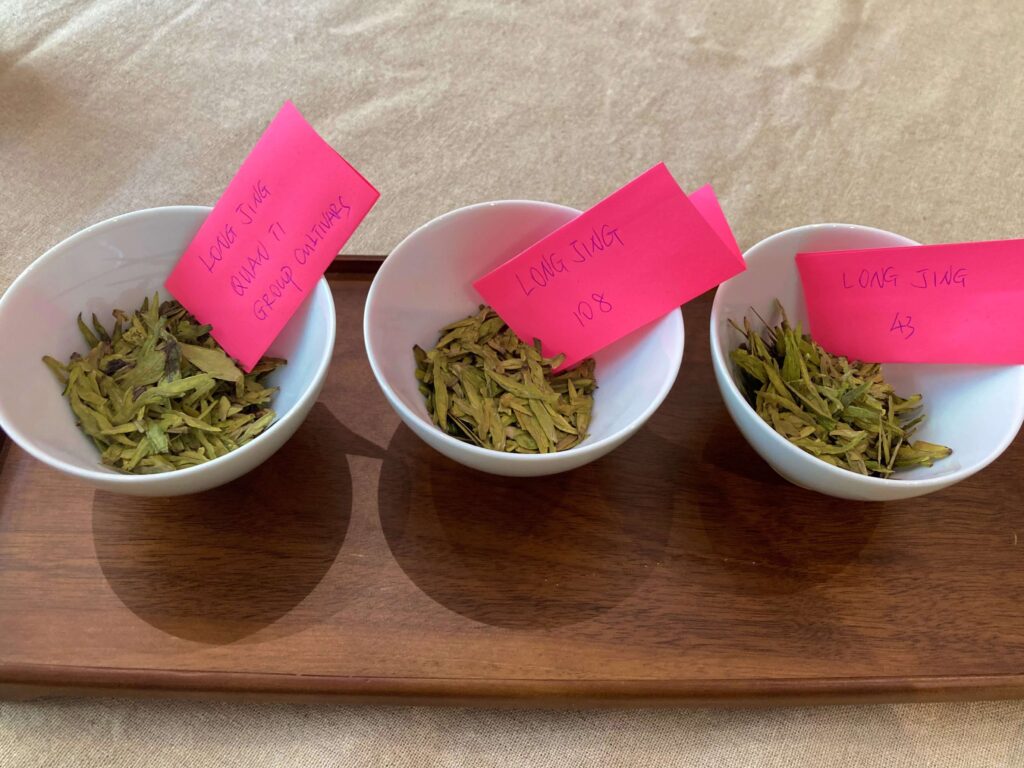
Appearance & Aroma
The Group Cultivar’s dry leaves looked more irregular and rustic compared to the quite uniform appearance of both Longjing 43 and 108. When it came to wet leaf aroma, the Group Cultivar was the lightest, while Longjing 43 had the strongest aroma with subtle nutty notes already coming through. Longjing 108 fell somewhere in the middle.
The liquor colours told a similar story – Group Cultivar brewed the lightest, 108 held the middle-ground, and 43 produced the darkest and brightest yellow liquor.
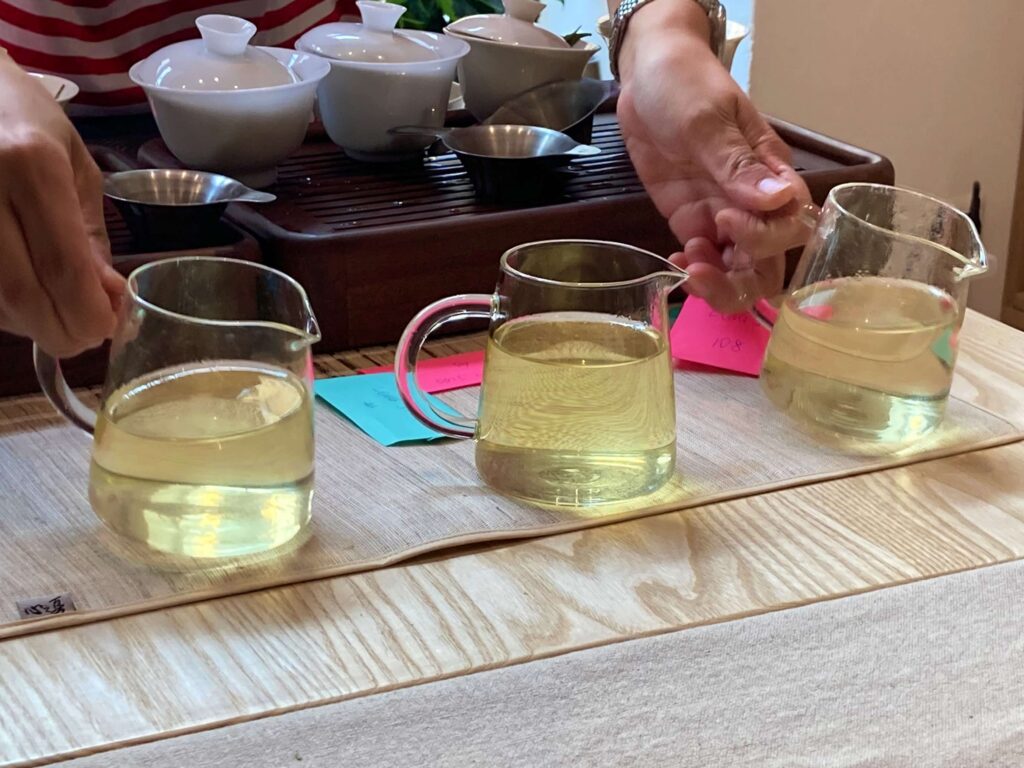
The Infusions
I have to say I was worried about my palette’s limits at the first infusion, as all three teas tasted very similar. We convinced ourselves that this is actually quite typical for Longjing due to the flattened processing style, which means the leaves need time to fully release their flavours!
By the second infusion, some personality was starting to emerge. The Group Cultivar remained quite delicate, vegetal and grassy, while both 43 and 108 were developing stronger flavours, though we weren’t getting those classic nutty notes yet.
At the third infusion, the Group Cultivar was starting to show some astringency while the flavours began to fade. Longjing 43 was still holding strong flavour-wise with just a touch of astringency. But Longjing 108 was the most flavoursome of the three with the least bitterness.
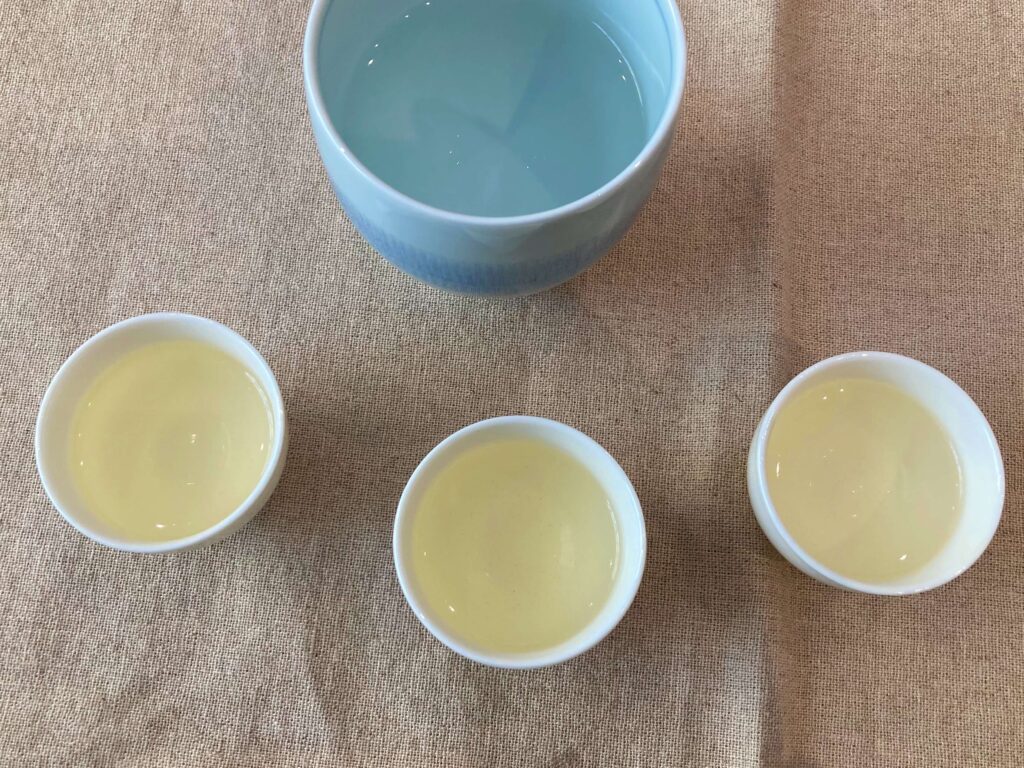
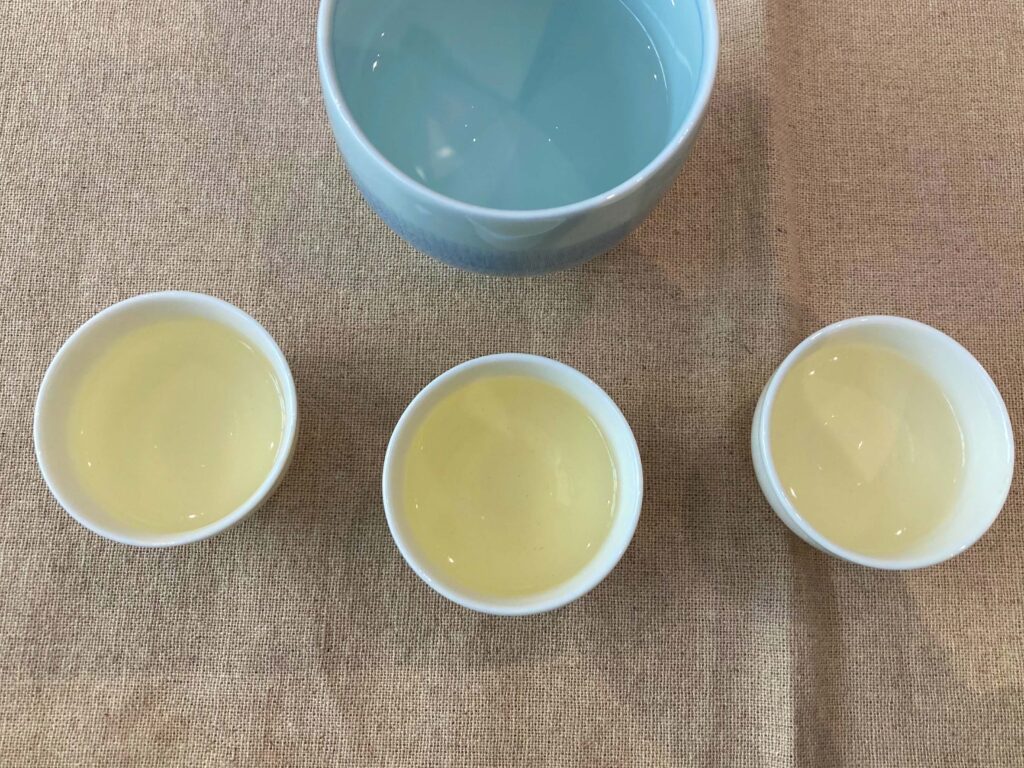
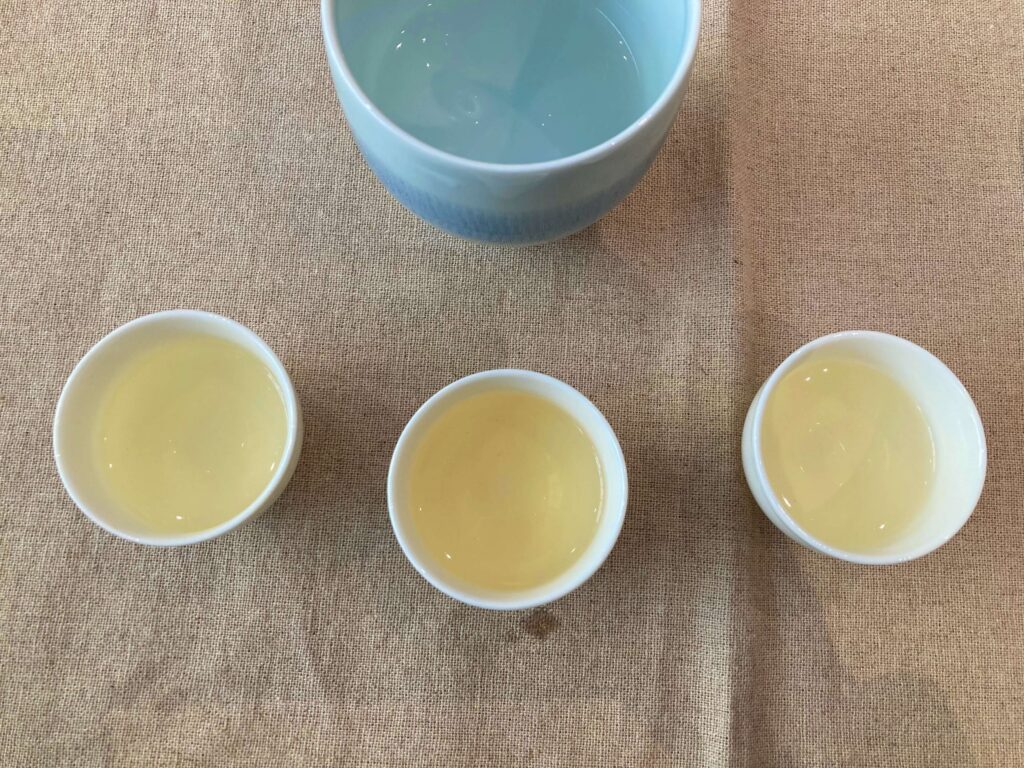
By the fourth infusion, the differences became quite stark. Group Cultivar and 43 were holding about the same as the previous infusion, but 108 had turned quite bitter.
Overall, Longjing 43 proved to be the most reliable, holding up well through multiple infusions. Though some other tasters preferred the Group Cultivar’s gentler profile, we all agreed that 108, while starting strong, didn’t have the staying power and became unpleasantly bitter when tested to the limit.
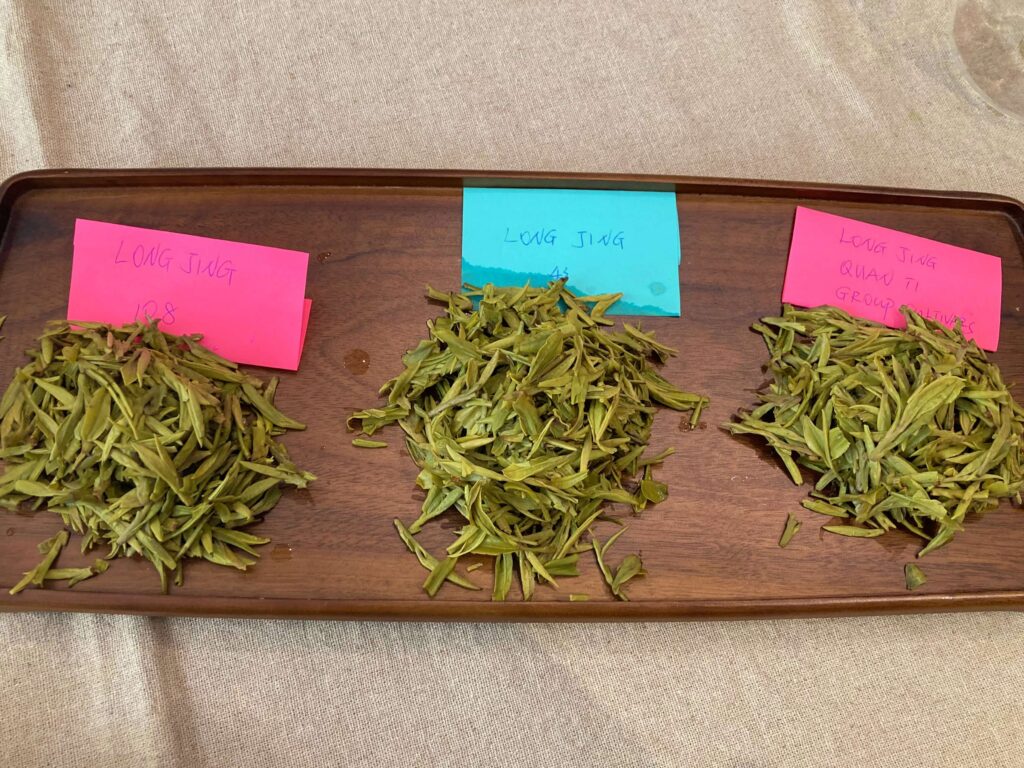
Round 2: The Terroir Showdown
Onto round two! We tasted two Longjing 43 teas, both from the core West Lake area’s Dragon region and from the same producer.
The difference was immediately apparent from the wet leaf aroma. Compared to the first round teas, these West Lake Longjings were in a completely different league – much more complex, with layers of nuttiness, florals, pine nuts, and an almost oily richness.
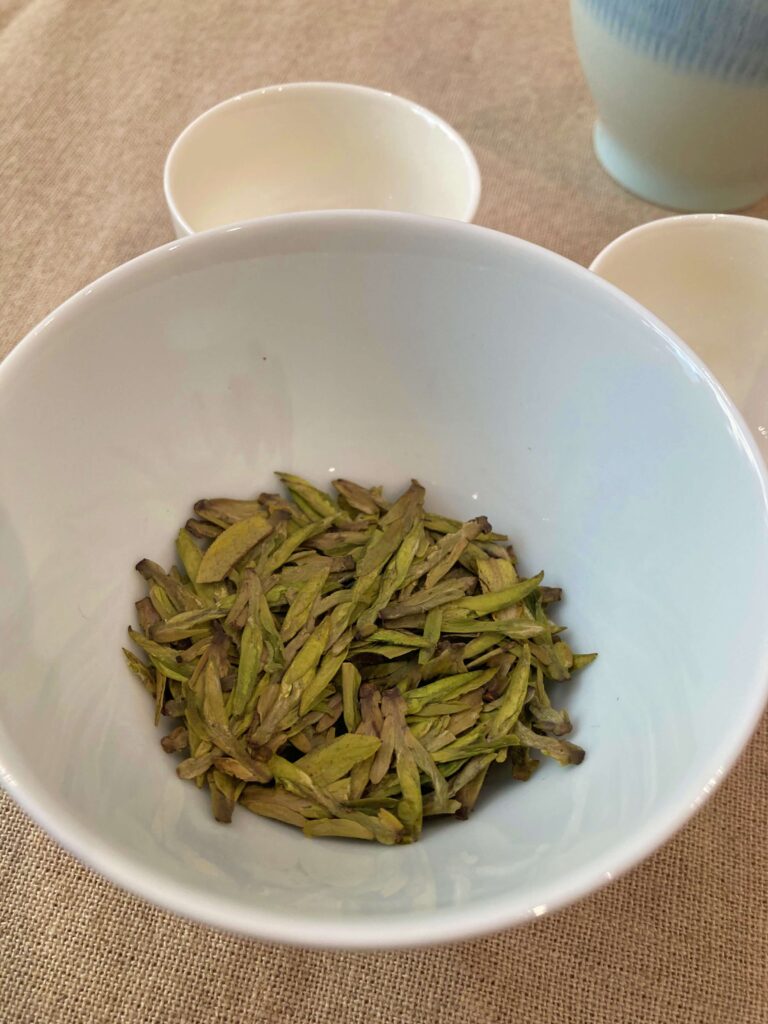
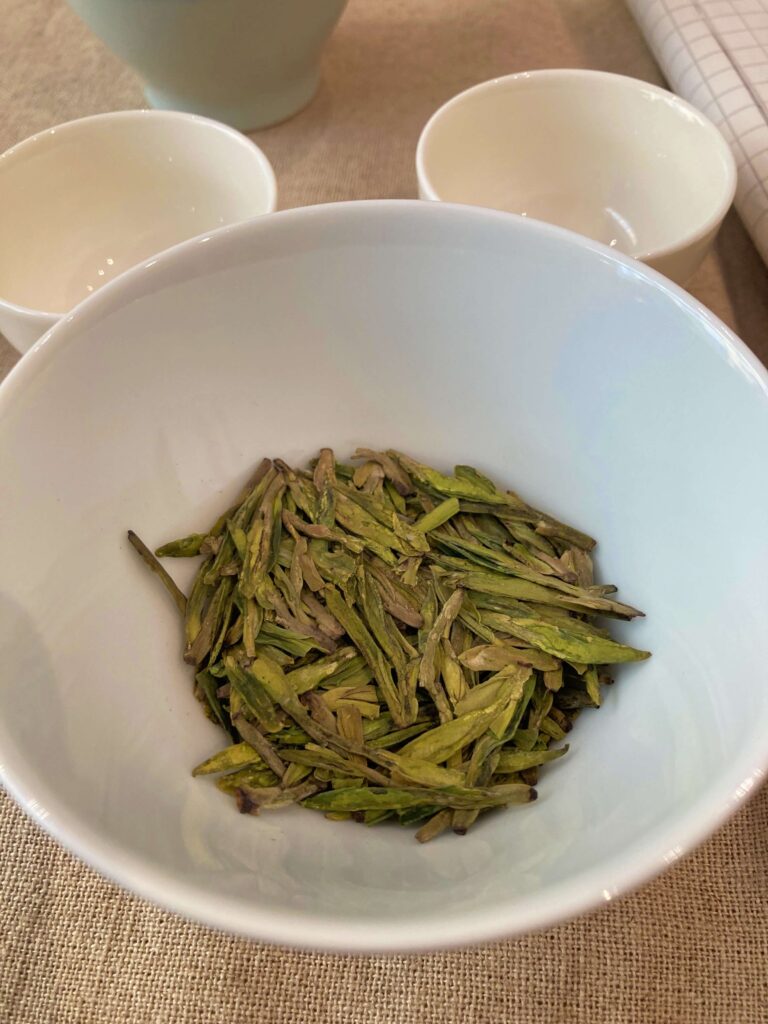
We nicknamed them “Special 43” and “Classic 43.” Special 43 was picked on March 21st, while Classic 43 was harvested just three days later on March 24th. Even though both came from the same producer, their different topographical locations created distinctly different flavour profiles.
This time we extended our brews with the 1st infusion at 30 seconds, the 2nd, 3rd and 4th at 20 seconds each, and a 5th infusion at 1 minute.
Infusions 1-3
Throughout these first three infusions, both teas just intensified with more layers developing. The nutty richness was coming through beautifully, giving a rich, creamy, and lush mouthfeel.
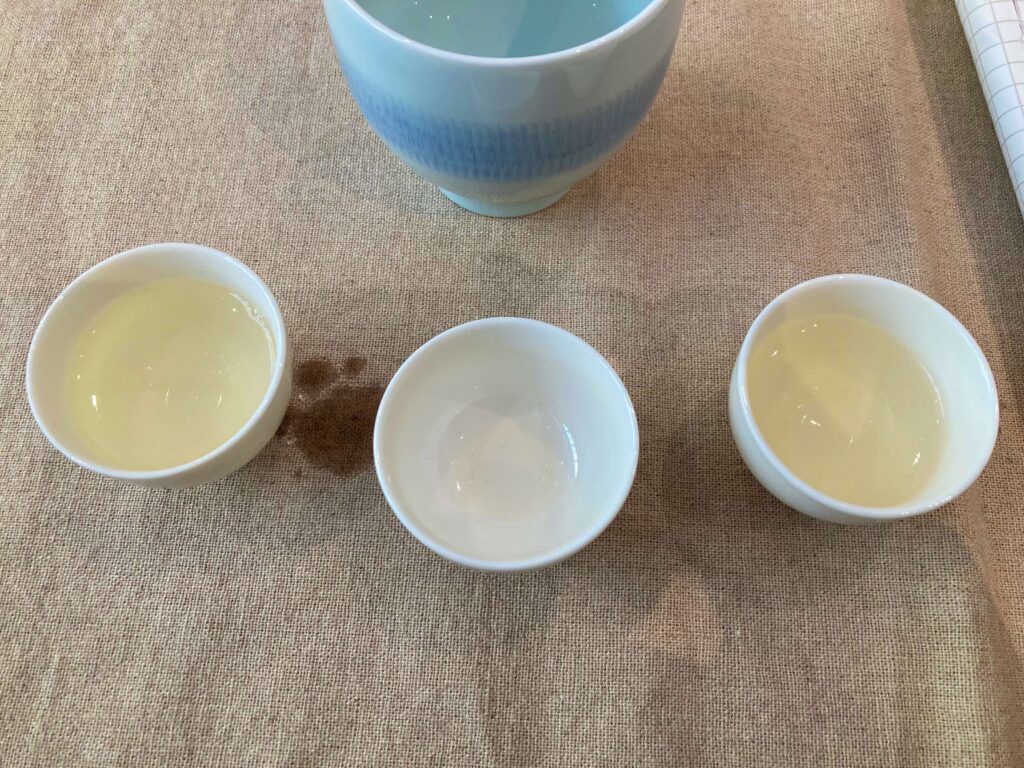
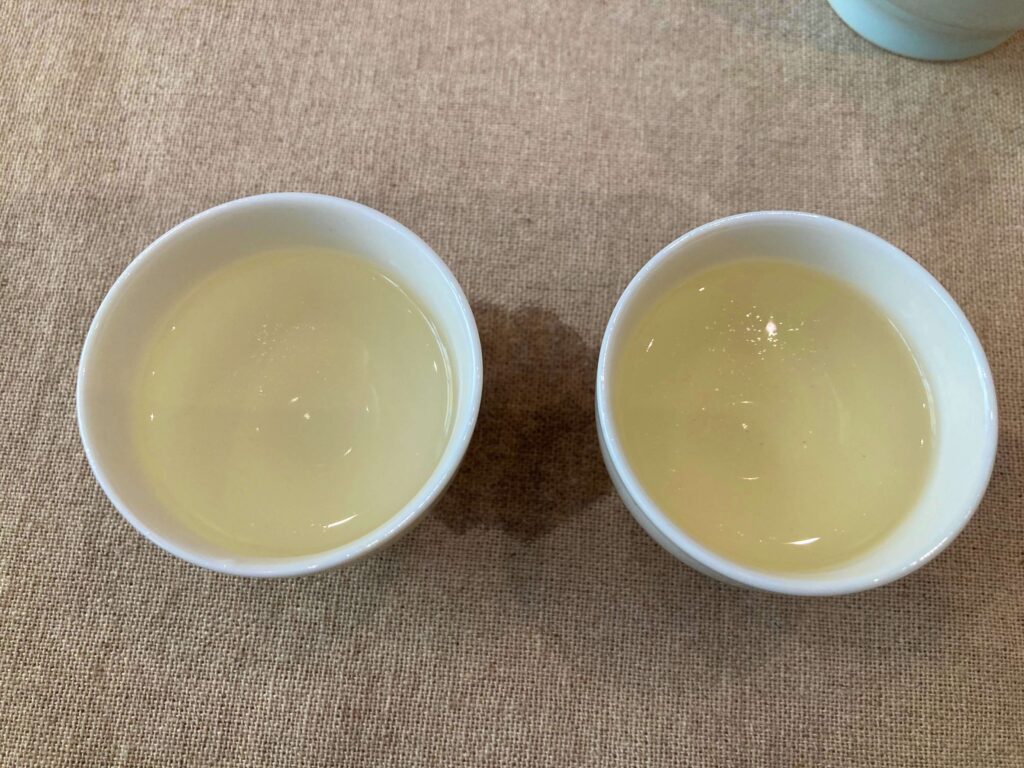
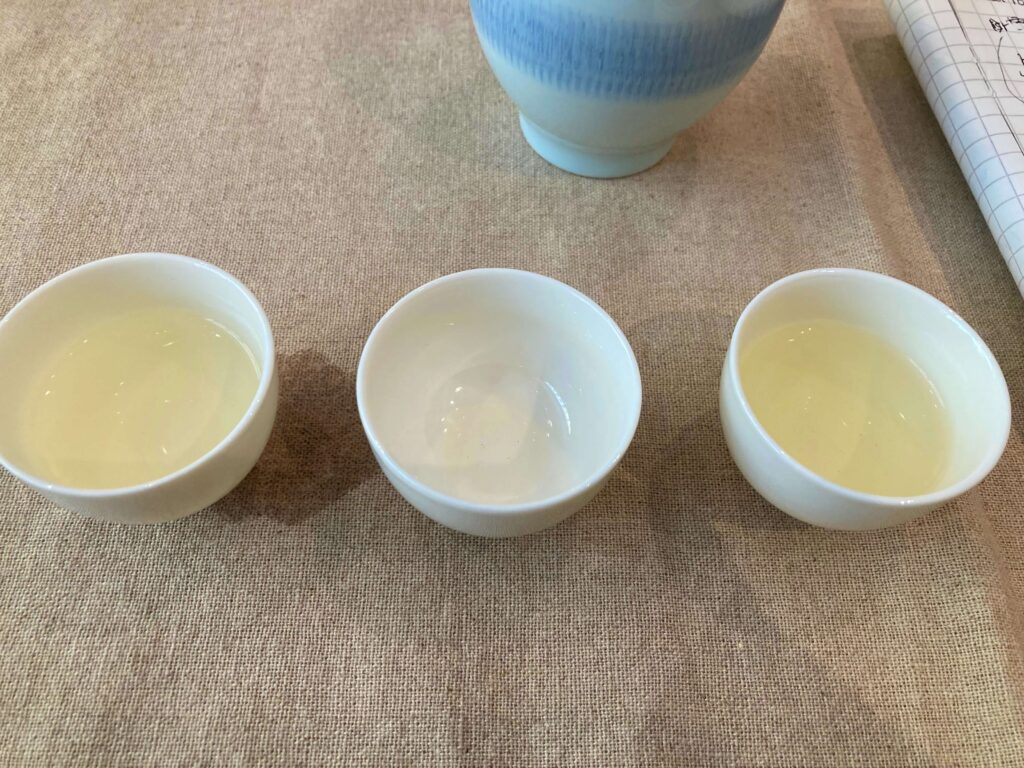
I was really surprised by Special 43. It had waves of underlying honey and orchid notes that were almost perfume-like. I actually wrote “singing” in my tasting notes because the tea seemed to have this vibrant, alive quality! Classic 43 was beautifully sweet and floral, rich and lush on the first taste. Though when I went back to it after trying Special 43, it tasted a little flat in comparison.
Infusions 4 and 5
At the 4th infusion, Special 43 was still going strong and becoming even more floral – such an interesting tea! Classic 43 was starting to lighten but was still very pleasant. Neither tea showed even a hint of astringency, both remained beautifully smooth.
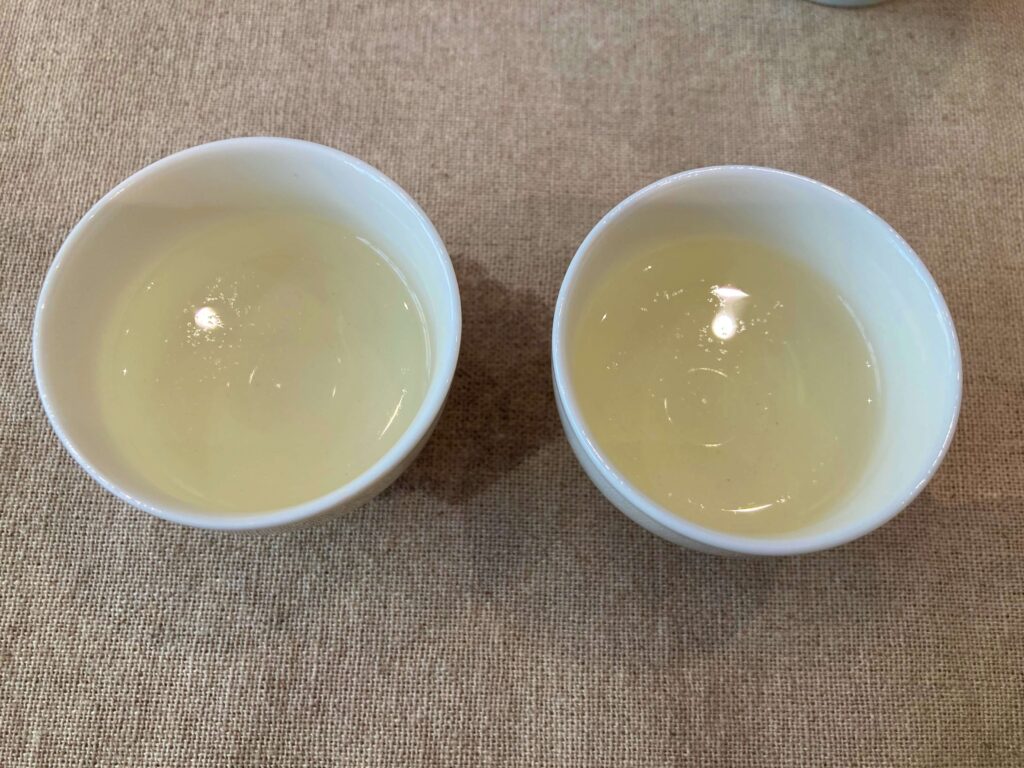
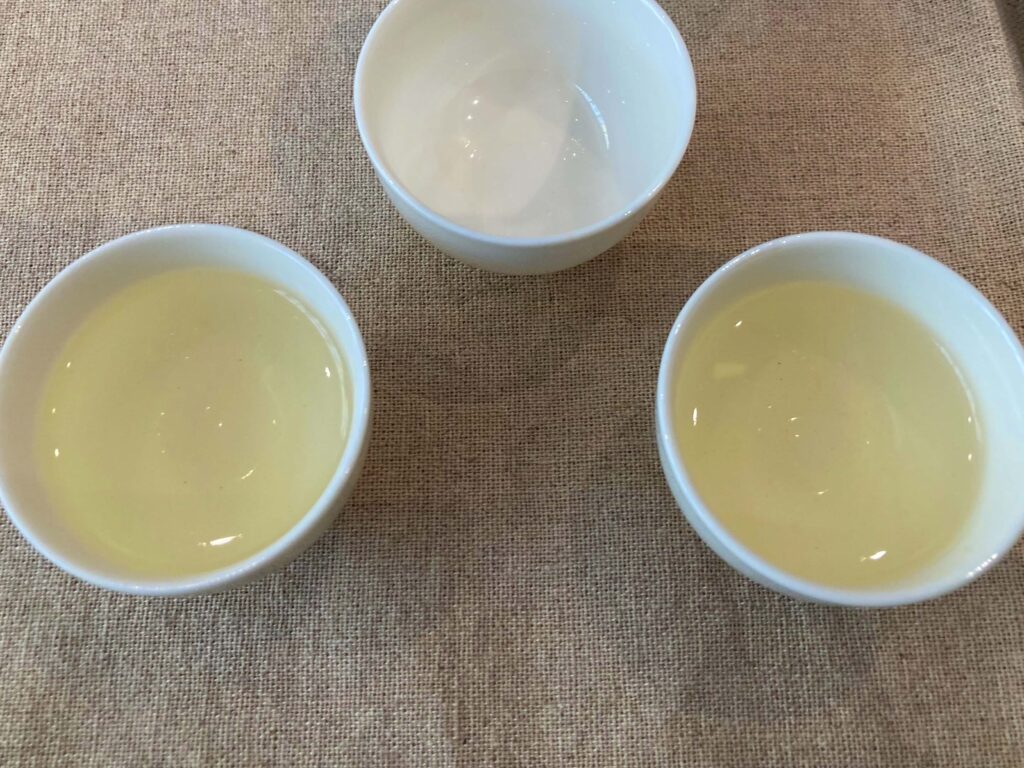
Even at the 5th stress-test infusion, Special 43 was still quite flavoursome, though some bitterness was finally creeping in. Classic 43 was starting to get weaker in taste with bitterness also making an appearance.
Compared to the first round, these West Lake Longjings were much rounder, sweeter, and had more staying power through multiple infusions with a longer aftertaste.
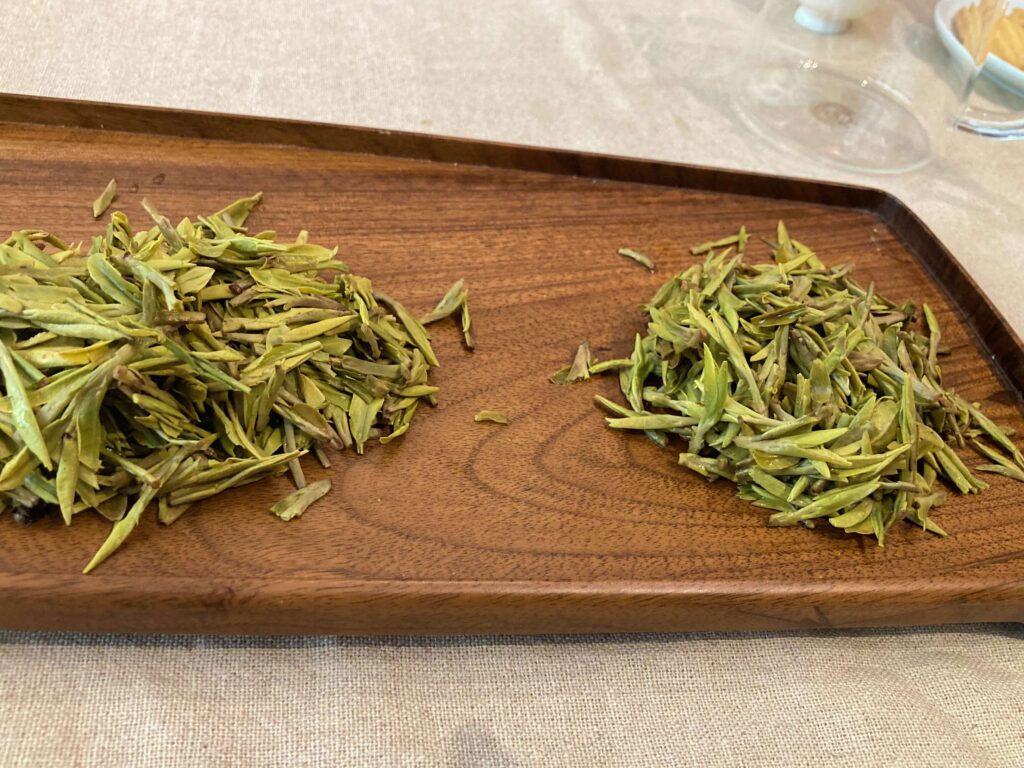
Wrapping Up
This Longjing tea tasting was really eye-opening – from the stats on Longjing tea production to the very different flavour profiles. I was actually a bit nervous about being able to tell any difference between the different cultivars! But it really demonstrated how terroir and cultivation create dramatically different flavour profiles even within the same small geographical area. The contrast between teas from outside the core production area and the West Lake Longjings was quite striking.
If you’re exploring Longjing tea, I recommend trying out different regions and cultivars to understand the full range this famous tea offers!


